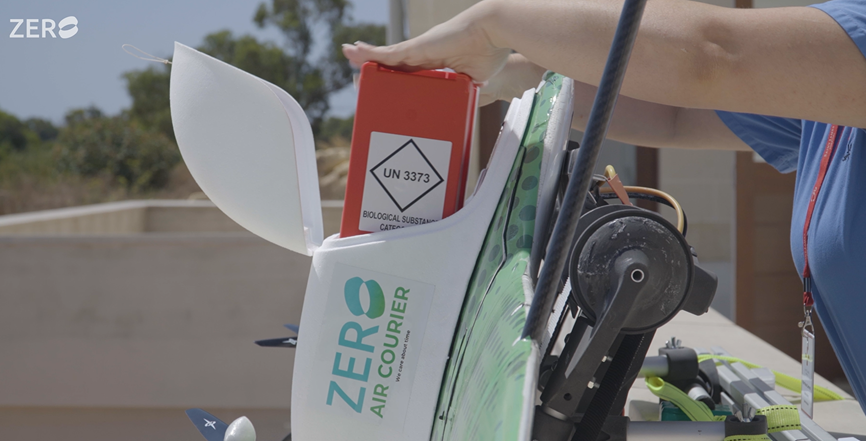Unlocking the Potential of Drone Delivery: A Comprehensive Analysis for Aviation Experts and Businesses
Safe, Economical, Eco-friendly Solutions Transforming Logistics. Explore the Future of Last-Mile Transportation Today!

Introduction:
The burgeoning technology of drones has sparked a revolution in the logistics industry, particularly in the domain of last-mile delivery. As the landscape evolves, driven by technological advancements and regulatory adaptations, drones are poised to emerge as a cost-effective and environmentally friendly alternative for package transportation. This comprehensive analysis delves into the current state of drone delivery, leveraging evidence-based studies and research primarily conducted in the European Aviation Safety Agency (EASA) region.
Current Landscape:
With over 2,000 commercial drone deliveries occurring daily worldwide as of early 2022, the momentum behind drone adoption is palpable. These deliveries span diverse sectors, from consumer goods to vital medical supplies, signaling the expanding role of drones in the delivery supply chain. Notably, drones offer a promising solution for last-mile delivery challenges, catering to both B2C and B2B needs.
Cost-effectiveness and Environmental Impact:
Evidence suggests that drones hold the potential to rival traditional transport modes in cost efficiency, particularly in regions with inadequate road infrastructure. Moreover, their environmental footprint, characterized by lower CO2 emissions compared to electric and gasoline-powered vehicles, underscores their sustainability credentials. Research conducted in Europe corroborates these findings, highlighting the substantial environmental benefits of drone delivery.
Labor Costs and Operational Efficiency:
A critical factor influencing the feasibility of drone delivery is labor costs. Presently, labor constitutes a significant portion of the total delivery cost, limiting the cost competitiveness of drones. Studies based on European data emphasize the imperative of streamlining operations to enhance efficiency. This entails advancements in technology and regulatory frameworks to enable autonomous drone flight and efficient traffic management systems.
Future Projections:
Looking ahead, projections indicate a paradigm shift in drone delivery economics. As technological innovations enable operators to manage multiple drones concurrently, the per-package delivery cost is expected to plummet. Research conducted within the EASA region suggests that with advancements allowing operators to oversee up to 20 drones simultaneously, delivery costs could become a fraction of today´s costs per package, making drones highly competitive compared to conventional delivery modes.
Implications for Businesses:
For businesses eyeing drone integration into their delivery strategies, careful consideration is paramount. Questions surrounding product feasibility, regional demand, infrastructure requirements, and sustainability goals must be addressed. While challenges persist, forward-thinking companies stand to reap substantial benefits from embracing drone technology. By formulating robust drone strategies aligned with regulatory dynamics and technological advancements, businesses can navigate the evolving delivery landscape with confidence.
Conclusion:
In conclusion, the trajectory of drone delivery holds immense promise, underscored by its economic viability and environmental sustainability. Aviation experts and businesses alike are encouraged to leverage evidence-based insights and strategic foresight to capitalize on this transformative technology. By embracing the evolving drone ecosystem, stakeholders can pave the way for a future where efficient, sustainable, and cost-effective delivery solutions redefine the logistics paradigm.
FAQs
How do regulatory variations across different countries impact the scalability and feasibility of drone delivery on a global scale?
Regulatory variations significantly impact the scalability and feasibility of drone delivery on a global scale. For instance, the European Union Aviation Safety Agency (EASA) has been actively developing regulations to govern drone operations, with the publication of the European Union Drone Regulation (EU) 2019/947. This regulation aims to harmonize rules across EU member states and facilitate the integration of drones into airspace. However, differences in regulations between regions, such as Europe, the United States, and Asia, pose challenges for multinational drone delivery operations. These variations encompass airspace restrictions, operational limitations, and certification requirements, influencing the deployment strategies of drone delivery companies.
What are the potential security concerns associated with managing a large fleet of drones simultaneously, especially in densely populated urban areas?
Security concerns surrounding the management of a large fleet of drones in urban areas are being addressed through technological innovations and regulatory frameworks. The European Union Aviation Safety Agency (EASA) emphasizes the importance of safety and security in drone operations, particularly in urban environments. Initiatives like the U-space framework aim to establish a harmonized set of rules and procedures for safely managing drone traffic. Additionally, advancements in drone technology, such as geofencing and remote identification systems, enhance security by preventing unauthorized access and enabling real-time monitoring of drone activities.
Are there any ongoing research or development initiatives focused on enhancing the range and payload capacity of drones to accommodate larger or heavier packages?
Ongoing research and development initiatives focus on enhancing the range and payload capacity of drones to accommodate larger or heavier packages. Organizations like the European Commission's Horizon 2020 program fund projects dedicated to advancing drone technology. For example, the AERIAL-CORE project aims to develop innovative solutions for long-range drone operations, addressing challenges related to endurance and payload capacity. Furthermore, collaborations between industry stakeholders and academic institutions drive continuous innovation in drone design and propulsion systems, enabling drones to carry larger payloads over extended distances.
How do seasonal factors, such as adverse weather conditions, affect the reliability and efficiency of drone delivery operations, and what mitigation strategies are being explored?
Seasonal factors, including adverse weather conditions, significantly impact the reliability and efficiency of drone delivery operations. Research conducted by organizations like the National Aeronautics and Space Administration (NASA) explores the effects of weather on drone performance and safety. Adverse weather conditions, such as high winds, precipitation, and low visibility, can impede drone navigation and compromise payload integrity. To mitigate these challenges, drone delivery companies employ weather monitoring systems and real-time data analysis to make informed decisions regarding flight scheduling and route planning. Additionally, ongoing advancements in drone design, such as improved stability control and weather-resistant materials, enhance operational resilience in adverse weather environments.
What are the anticipated implications of widespread drone adoption on existing job roles within the transportation and logistics sector, and what measures are being considered to address potential workforce displacement or retraining needs?
The widespread adoption of drones in delivery operations may have implications for existing job roles within the transportation and logistics sector. Research conducted by organizations like the World Economic Forum (WEF) examines the potential impact of automation, including drone technology, on the workforce. While drone delivery offers opportunities for efficiency gains and cost savings, it may also lead to workforce displacement in certain roles, such as manual package handling and transportation. To address these challenges, stakeholders advocate for proactive measures, such as workforce retraining programs and skill development initiatives, to equip workers with the necessary capabilities for transitioning to new roles within the evolving drone ecosystem.

